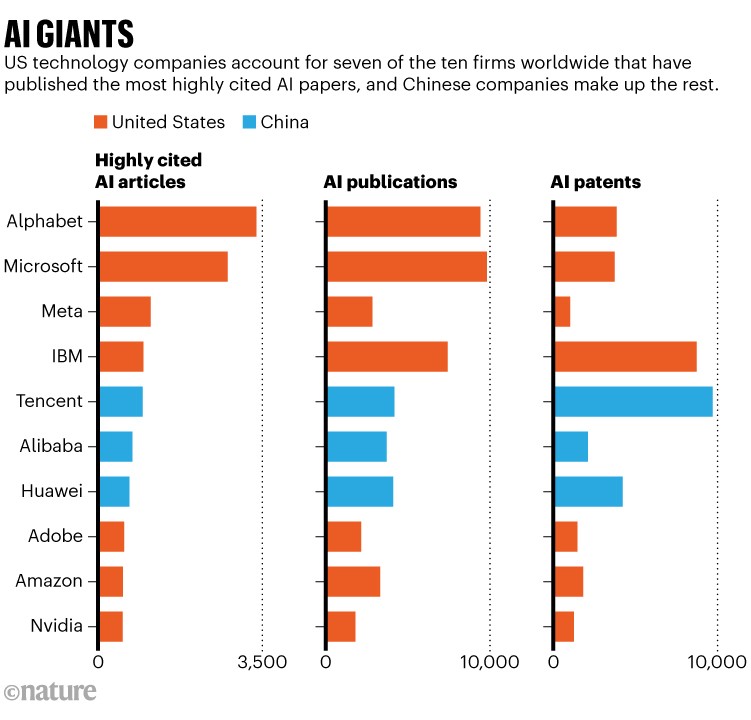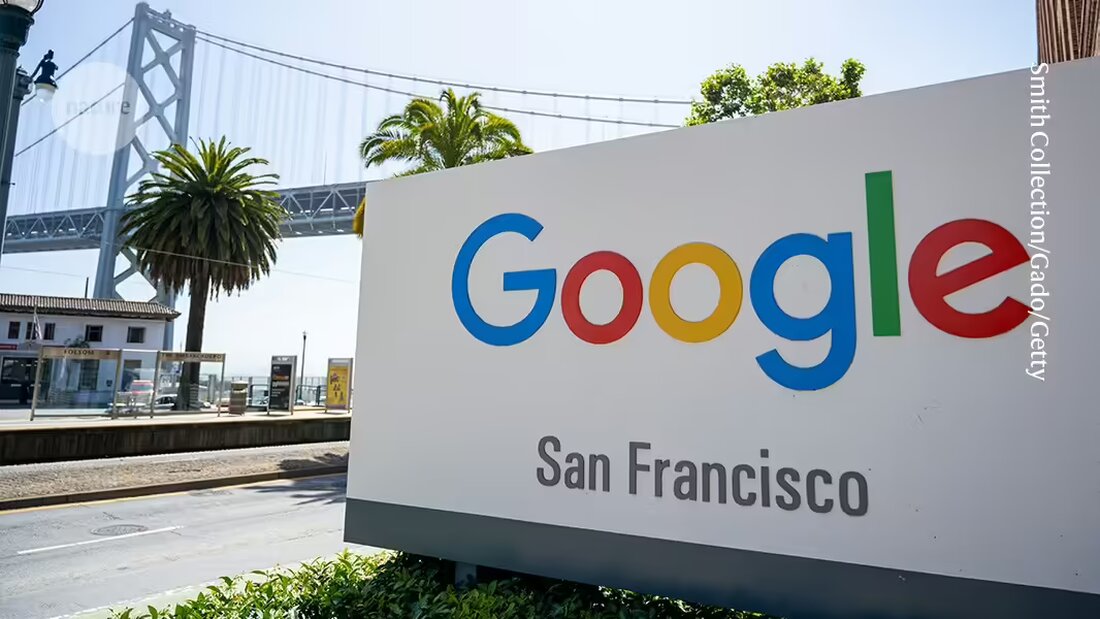US tech giants Alphabet and Microsoft produce more highly cited artificial intelligence (AI) research papers than any other company - but Chinese companies Baidu and Tencent lead the way in patents.
This emerges from PARAT, the Private-Sector AI-Related Activity Tracker, a tool from the Emerging Technology Observatory (ETO). The tool collects data on AI trends and has been significantly updated.
PARAT's update includes data on the number of AI jobs in companies as well as publication and patent performance. AI research and its products – particularly generative models that create text and images – have become a lucrative business. Governments are working on how to regulate the technology as it disrupts industries and raises safety questions.
In a field where cutting-edge research is taking place in both industry and universities, it is important to monitor commercial activity, says Ngor Luong, who tracks AI investment and corporate activity at the Center for Security and Emerging Technology, an AI-focused think tank at Georgetown University in Washington DC, which houses the ETO. According to them, companies are leaders in innovation in AI.
International competence
The data shows that large Chinese companies are very competitive in the field of AI, even when taking into account the quality of the work produced, says Zachary Arnold, senior analyst at the Observatory. Three Chinese tech giants - Tencent, Alibaba and Huawei - are in the top ten when companies are ranked by the number of highly cited AI articles and preprints. “There's still a bias here in D.C. and probably elsewhere that China is big and can produce a lot, but it's not really top of the line,” Arnold says. However, the ETO calculates several quality-adjusted metrics and Chinese companies are achieving “impressive numbers” in this area, says Arnold.

The most cited paper in all AI research, according to PARAT data, is a 2017 paper titled 'Attention is all you need'. The paper, by US researchers at Alphabet subsidiary Google, is famous for describing the 'Transformer' architecture that now underlies many generative AI models. A highly cited example with authors from China is a paper entitled 'ICNet for Real-Time Semantic Segmentation on High-Resolution Images', written by researchers at Tencent, which describes an improved method for identifying objects in images.
U.S. companies make up just three of the 10 companies that have filed the most AI patents over the past decade - the others are in China, Germany and South Korea. The Chinese government has long incentivized patents, but in recent years there has been a movement against arbitrary filing, Luong adds.
Top employer
The data also highlights the diversity of the sector, says Arnold. There is a long queue of companies well beyond the 'big five' companies - Alphabet, Amazon, Apple, Meta, Microsoft. And when sorted by highly cited AI research, famous names like OpenAI and Apple appear alongside companies less known for their AI innovations, like Japanese conglomerate Mitsubishi and US entertainment company Disney. Luong points out that PARAT's paper and patent data only extends to early 2023, so they miss out on current developments.
Other metrics sometimes show overlooked AI activity, says Arnold. PARAT now includes numbers on the number of AI jobs in a company, a metric based on data from social media platform LinkedIn that is most accurate for U.S. companies. It highlights companies with “a pool of talent in AI,” he says. Amazon comes first with 14,000 jobs, but is closely followed by international consulting firm Accenture. Large consulting firms now act as “mercenaries” for AI projects at other companies and in the government, says Arnold.
It's important to look at companies' activities from different perspectives, he adds. “We've heard a lot of discussion about 'Who's leading in AI?' We're data nerds and know that there are many different types of data you can use to answer this question, and they don't always point in exactly the same direction.”

 Suche
Suche
 Mein Konto
Mein Konto

